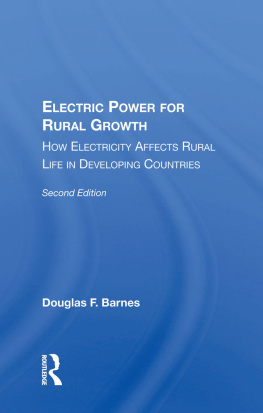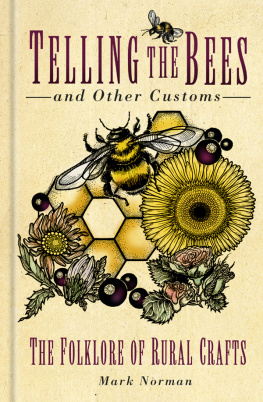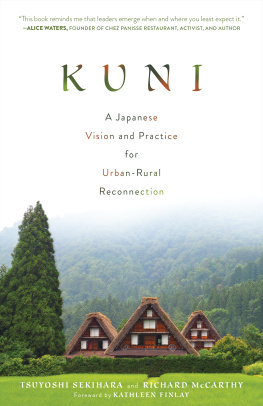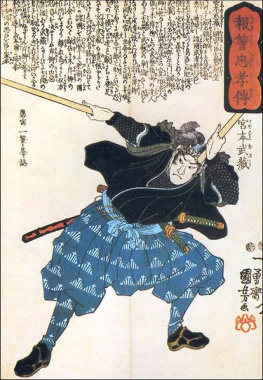The Forgotten Japanese
Encounters with Rural Life and Folklore
Miyamoto Tsuneichi
Translated by Jeffrey S. Irish
Stone Bridge Press Berkeley, California
Miyamoto Tsuneichi.
Kagoshima Prefecture. 1962.
Photograph by Haga Hideo .
Published by
Stone Bridge Press
P.O. Box 8208
Berkeley, CA 94707
tel 510-524-8732 sbp@stonebridge.com www.stonebridge.com
Originally published as Wasurerareta Nihonjin in 1960 in Japan by Miraisha Publishers.
All photographs by the author unless otherwise noted.
Translation 2010 Jeffrey S. Irish, based on the April 1971 edition with additional chapters.
Japanese names appear in customary order, family name first.
Jacket design by Linda Ronan with photographs by Haga Hideo ( top ) and Miyamoto Tsuneichi ( below ).
All rights reserved.
No part of this book may be reproduced in any form without permission from the publisher.
Library Of Congress Cataloging-In-Publication Data
Miyamoto, Tsuneichi, 19071981.
[Wasurerareta Nihonjin. English.]
The forgotten Japanese: encounters with rural life and folklore / Miyamoto Tsuneichi, translated by Jeffrey S. Irish.
p. cm.
Includes bibliographical references and index.
ISBN 978-1-933330-80-8 (alk. paper)
1. JapanSocial life and customs. 2. JapanDescription and travel. I. Irish, Jeffrey. II. Title.
DS821.M615 2009
952.03 ' 3dc22
2009024242
Translators Introduction
Miyamoto Tsuneichi (190781) is one of Japans greatest ethnologists and one of her best kept secrets. Over a period of thirty years, Miyamoto walked some one hundred thousand miles in search of the meaning of life in rural Japan. He found it in the songs and stories, in the living and working habits of its fishermen, farmers, and mountain men and women. Born into a farming family on an island in Japans Inland Sea, Miyamoto was first a folklorist, an observer, and recorder who wrote more than eighty books and took ninety-five thousand photographs. But he did not stop there. He took what he had learned on the road and became a key government advisor, an advocate for the social and economic invigoration of rural communities weakened by outmigration and encumbered with an aging population.
Miyamotos parents were unable to pay for his education beyond junior high school, so after a year farming at home he set out to look for work in Osaka. Miyamoto was sixteen when his father sent him off with advice that would greatly influence his approach to life and to his work as an ethnographer:
- When you take a train, look out the window at the condition of the fields and crops, the size of the homes, the kind of roofs they have. When you arrive at a station, watch carefully to see who is getting on or off. Observe their clothing and luggage. From this you will know if the place is wealthy or poor, whether it is a place where people work hard or not.
- When you visit a city or town for the first time, always climb up someplace high to see where you are. Look for temples and for the forests that grow on shrine grounds. Look too at the nature of the homes and fields, and the surrounding mountains. If something at the top of a mountain catches your eye, go to it. If you take a good look from above, you will almost never lose your way.
- If you have any money, try the local food and you will know the nature of life there.
- If you have time, walk as much as you can. You will learn many things.
- Its not difficult to make money, but its hard to spend it wisely. Dont forget that.
- Im unable to provide for your education, so I ask nothing of you. Do as you like, but take care of yourself. Think of yourself as disowned until you reach thirty, but thereafter, remember your parents.
- If you become sick or have troubles you cannot resolve alone, then come back home. We will always be waiting for you.
- This is no longer an age in which children care for their parents. Its an age when parents care for their children. Otherwise the world will not improve.
- Whatever you think is good, give it a try. We will not criticize your failures.
- Look at what others have missed. Theres always something important to be found. Theres no need to rush. Whatever road you choose in life, walk it with purpose.
In Osaka, after working for the post office for several years and putting himself through teachers college, Miyamoto took a job as an elementary school teacher. When time permitted, he explored the countryside outside Osaka and began asking people about their lives. At twenty-two, Miyamoto came down with tuberculosis and returned home to O shima Island to convalesce, but two years later he was back in Osaka, teaching elementary school and researching rural life.
In 1935, when Miyamoto was twenty-eight, he met Shibusawa Keizo, grandson of Shibusawa Eiichi, one of Japans most successful entrepreneurs. Ten years Miyamotos senior, Shibusawa was a banker and an avid ethnologist devoted to the study of the common people and their contributions to Japanese culture. He established the Attic Museum in a building on his own private property in Tokyo, which became a gathering place for Japanese tools and folk crafts, and for the young ethnologists whom Shibusawa engagedand generously sponsoredin a wide variety of research efforts.
In 1939, at age thirty-two, Miyamoto resigned his job as an elementary school teacher and began walking and researching full time. With Shibusawas untiring encouragement and financial support, and often on government or academic assignment, Miyamoto would walk, look, and listen for much of the remainder of his life. In 1941 he went to Shikoku, the smallest of Japans four main islands, and heard stories that would become the basis for Tosa Genji and Tosa Terakawa Night Tale herein. Physically unfit to fight in the war, Miyamoto performed research for the government with regard to farm productivity and land reform. The war intensified around him and when Osaka was bombed in July, 1945, Miyamoto lost all of his research notes.
Having studied the resettlement of communities that had been devastated by landslides and flooding late in the nineteenth centurydescribed in Totsukawa Landslide and New TotsukawaMiyamoto helped communities that had been destroyed in the war resettle to Hokkaido. As an agricultural advisor to the Japanese government and later as a member of various interdisciplinary research teams, Miyamoto continued to explore and study villages that fished, farmed, and lumbered for their livelihood. In the early 1950s he began his first serious study of Japans islands, work that would contribute to the establishment of the Remote Island Development Act and to his becoming the first director of the Remote Island Development Council in 1953. His related travels to the island of Tsushima in 1950 and repeatedly thereafter would inform his writings in the first three chapters of this book.
Despite the return of tuberculosis in 1953, Miyamoto turned his incomparable energy to the study of forestry, visiting more than two hundred mountain communities in the mid- to late 1950s. The more he traveled, the more Miyamoto learned about fishing, farming, hunting, and logging, and about the ways in which individuals and communities fail, survive, and sometimes thrive.









